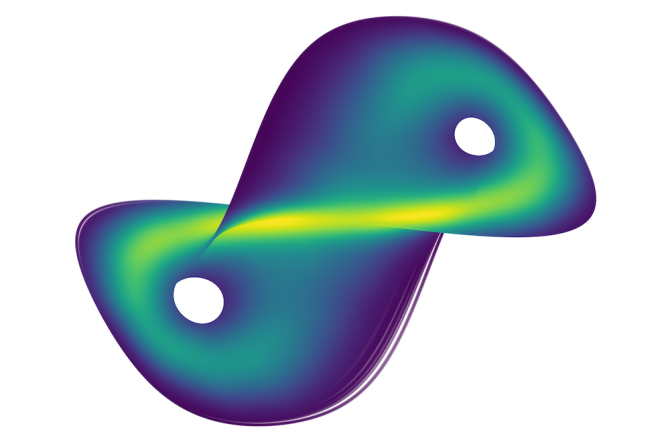Many of the world's most important systems, such as the atmosphere, turbulent fluids, and even the motion of planets, behave unpredictably due to chaos and noise. Scientists often study these systems through their "invariant" measures, long-term statistical behaviors, rather than individual paths. While useful, these measures have a fundamental limitation: completely different systems can share the same statistics, making it impossible to identify the underlying dynamics.
An example of an invariant measure for a simplified mathematical model of atmospheric convection known as the Lorenz-63 system, using the researchers' method of time-delayed snapshots.
Researchers led by mathematician Yunan Yang have introduced a new way forward, using time-delay snapshots. Their work, "Invariant Measures in Time-Delay Coordinates for Unique Dynamical System Identification," was published in Physical Review Letters Oct. 17.
An invariant measure is a way of assigning size or probability to parts of a system that remain unchanged when the system is transformed or evolves. Time-delay snapshots use invariant measures that are expressed in time-delay coordinates - linking present observations to their past values - and providing enough information to distinguish between systems.
Translating these theoretical results into computational tools, the researchers were able to demonstrate their effectiveness with physical examples.
Read the full story on the College of Arts and Sciences website.







